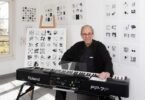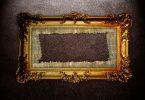
Dr. Christoph E. Hänggi (c) Felix Jehle
Since 2003 Dr. Christoph E. Hänggi, born 1960, has directed the Museum of Music Automatons, founded by Dr. h.c. Heinrich Weiss in Seewen (Switzerland). This world-class museum – comparable in scope to the Beyeler Foundation in Riehen – was gifted to the Swiss Confederation in 1990 and is now managed by the Swiss Federal Office for Culture. Restoration work by M. Welte & Söhne (Freiburg i.Br.) on a philharmonic organ belonging to the Museum of Music Automatons in 2007 led to a spectacular discovery. The Welte-Philharmonie-Organ had been built for the ocean steamer Britannic – the sister ship to the Titanic. The Britannic, originally intended as a Luxury Liner was instead, outfitted as a hospital ship during WWI. She hit an underwater mine and sank in the Aegean Sea. The history of the Welte-Philharmonie-Organ has all the elements of a best-selling thriller. In addition to the organ, the museum also displays unique, beautiful and astounding music automatons, finger rings that make music, as well as orchestrions which in earlier times provided dance music in restaurants and dance halls. The museum collection also contains over 6000 music rolls, on which organ and piano interpretations of famous musicians such as Max Reger, Arthur Nikisch and Richard Strauss are preserved. In this interview, musicologist Dr. Christoph E. Hänggi talks about the development of music from the 19th century to the present, describes music automatons that puzzle and astound even today’s most experienced technicians and draws parallels between the time of music automatons and the musical trends of today.
Dueblin: Dr. Hänggi, you have directed the Museum of Music Automatons in Seewen for ten years now. One needs to see and hear the exhibited automatons in person to really appreciate the musical and historical information they have “to tell”. Before we discuss these automatons, however, I would like to ask how you as a musicologist became a museum director.
Dr. Christoph E. Hänggi: The position was advertised and I happened to see the ad, informed myself about it, applied, was invited to interview and was chosen. Several times back in the 1980s I had visited the museum – at that time still privately owned – but I could never have imagined then that I would one day be its director. The new extension which opened in 2000, doubled the museum’s exhibition space and suddenly created completely new opportunities.
My professional career has always revolved around music. I studied musicology, art history and history in Basel and Zurich. From 1990 to 1992 I acted as musical editor for Opus Radio, a classical music station run by the Zurich radio producer, Roger Schawinski. After that I joined the Bertelsmann Music Group (BMG) and was responsible for the classical music division for Switzerland. In addition to Universal, Sony and EMI, BMG was, at that time, one of the largest musical production companies in the world. In 1998 I was given the possibility to take over the worldwide marketing and sales of one of BMG’s classical music labels. I was also able to do further education in business administration which extended my professional horizons considerably.
Musicology and Business Administration was a sought after mix in 2003 in Seewen. I think I chose the right time to make the switch, because huge changes were starting to happen in the music industry. In the last ten years, CD sales have plummeted and the turnover for the musical production companies has shrunk to a third of its volume in 2003. This has created great challenges not only for the producers, but also for the singers and musicians. Of course this decrease in turnover is tied into the establishment of new technologies such as the internet and downloading. Today it seems to be taken for granted that music is available directly over the internet and hardly costs anything. It was clear to me that this was going to cause major problems for the music industry. At that time, however, I also wanted to return to my roots, to take my family back to the Basel area where I had grown up.
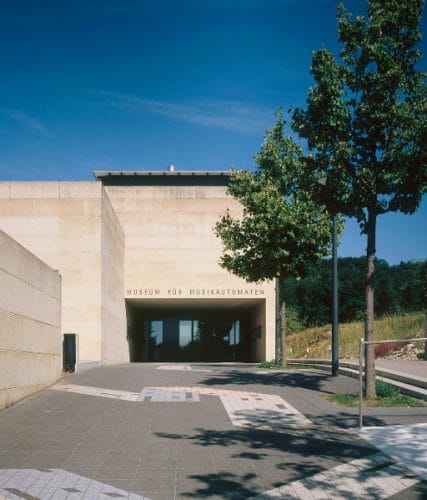
The Museum of Music Automaton, Seewen
Dueblin: You wrote a dissertation on romantic musical aesthetics (G. L. P. Sievers (1775-1830) und seine Schriften: Eine Geschichte der romantischen Musikästhetik, P. Lang, 1993. ISBN 3906750213). It seems to me that this aesthetic is mirrored here in every corner of this museum. The automatons have this romantic caracter, not only in their external appearance but also in the way the music was understood and used.
Dr. Christoph E. Hänggi: I only became aware of this connection between the music automatons and my dissertation after some time working in the museum. Music boxes created in all shapes and forms in Switzerland in the 19th century and produced in great numbers, served no other purpose than playing music and pleasing the listener and the beholder. Before that time – I’m speaking of the time of Baroque or Classical Age – before the Romantic period of the 19th century, music always had a practical purpose, whether it was as dance music for a royal court, as church music or to tell the time in a musical- or flute-clock. At the end of the 18th century however, music started to become independent. Mozart wrote masses and operas, but also piano pieces which were later interpreted in terms of romantic musical aesthetics. The purpose of a composition no longer needed to be immediately apparent to the listener.
E. T. A Hoffmann formulated this in his writings around 1810 about Beethoven’s symphonies – Music was raised to a romantic art form. At the same time, music boxes also lost their original purpose. Originally musical mechanisms were built into clocks and rang on the hour or at other specific times. Also music box mechanisms were built into clock pedestals. In the 19th century however, flute clocks and music boxes became autonomous and played whenever the owner wished; the clock part vanished.
To be precise, my dissertation is about Georg Ludwig Peter Sievers, a contemporary of the writer and composer E.T.A. Hoffmann. As a musical critic, he, along with E. T. A. Hoffmann, concerned himself with music and its purpose, described Mozart, for example as a romantic composer and commented on many other musicians of his time. I wanted to show that E. T. A. Hoffmann should not be viewed as the inventor of romantic musical aesthetics, but that his study of music was without a doubt a sign of the times. Many other great minds of that time came to the similar conclusions as his at the same time and even earlier.
Dueblin: These debates continue even today; I am thinking of Wagner and his music for example…
Dr. Christoph E. Hänggi: That is absolutely right. The discussions about Richard Wagner’s music can certainly be viewed as the culmination of this development and he is still controversial today. However, there are similar debates about many other composers of the 19th century: Chopin, Debussy, Liszt, just to name a few.
Dueblin: The technical developments from that time, which can be seen in the Museum of Music Automatons are overwhelming: devices that can play a dozen instruments, orchestrions that can play three violins at a time, pictures that move and make music and finger rings which are actually little filigree music automatons: quite often Swiss-made pieces. Even today this technical development cannot be stopped. Do you see parallels between that time and today in the technical developments within the music business?
Dr. Christoph E. Hänggi: It is true that the course of events repeat themselves on consistently newer technical levels. Suppliers of technical equipment to play music are still today resorting to a variety of ways to out-do their competitors and take over the market. It was no different 100 years ago. For example, when the American company Aeolian, known for building mechanical pianos, brought the Pianola onto the European market, the German company Hupfeld in Leipzig reacted with a competitive product that had a very similar name, “Phonola”. They competed and tried to squeeze each other out of the market just like now. Businesses outperformed each other with numerous inventions and new technologies which, today, seem inconceivable. It’s also interesting to know that the vinyl or shellac records, which some people are still familiar with, were not the beginning of the music business, as some may think. At the end of the 19th century, it was already possible to record voices and instruments with a phonograph. Such a phonograph cylinder is also a sound storage device and these were sold worldwide. Even before that, musical pieces were mechanically recorded and played with the aid of paper rolls or wooden cylinders. Even these music rolls or cylinders of the 18th and 19th centuries were technically sound storage devices.
Dueblin: The Museum of Music Automatons founded by Dr. h.c. Heinrich Weiss not only possesses ingenious musical devices but also numerous rolls for piano and organs on which musical performances from the late 19th and early 20th century are preserved. Music automatons are, so to speak, historical witnesses of numerous interpretations from musicians the world over. How do you personally judge the value of these recordings of such famous musicians of the time?
Dr. Christoph E. Hänggi: The musical epistemic value of these early recordings is much higher than long believed. It is now widely accepted that these music rolls and the interpretations of the artists of that time should be scientifically researched. Musical researchers were long reluctant to study these recordings. The music on these rolls were considered not authentic and were not taken seriously. The subject was dismissed, as is often the case when detailed information is lacking. Today things are different. The museum has noted a great interest in the rolls and is working closely together with the Bern University of the Arts, which is very interested in the recordings on the Welte-Mignon-Piano and the Welte-Philharmonie-Organ. Some of the artists that did piano recordings in 1905 or organ recordings in 1909 were born or taught far into the first half of the 19th century. Today we can analyse these recordings and look back into the history of interpretations from those early times. Comparisons of music rolls from younger performers with equivalent schellac recordings of the same artist have shown that the recordings on the Welte-Mignon-Piano and the Welte-Philharmonie-Organ were indeed high quality. Recent research projects carried out by the Bern University of the Arts have shown that in comparative analyses of recordings on music rolls with performances on records, the quality is often equivalent. That caused many specialists to sit up and take notice. They had to acknowledge that a performance can be recorded and played from a music roll exactly in the way it was played by the musician.
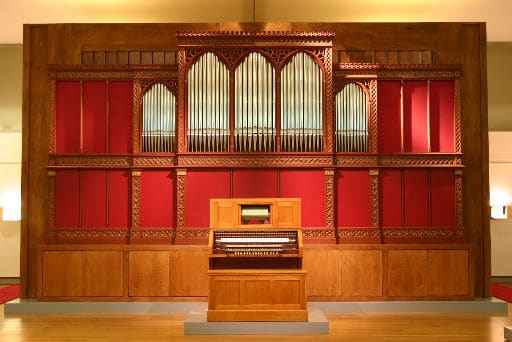
The Britannic Organ
Dueblin: Many musicians today have very clear ideas about how classical music should be interpreted. Certainly these notions are warranted, but one could ask if the performers of the past would also see it that way. These music rolls are like a door, previously closed, which could give valuable clues about how music was interpreted in the past, from musical legends such as Liszt, Chopin und Wagner, just to name a few from that time.
Dr. Christoph E. Hänggi: That is one of the important uses of the recordings on music rolls that is available to the Museum of Music Automatons. It is true that there are conventions today about how a musical piece should be played, what is allowed or not allowed in an interpretation, how you reproduce a piece. With the interpretations recorded on these music rolls, it becomes clear that things were not so rigidly viewed in the late 19th century. The interpretations vary in many ways from the quite fixed ideas of today. These days there are so many recordings of a specific musical piece available, that artists inspire and copy each other and are influenced and distracted from their own analysis in many ways. In the past, the lack of music availability made such a distraction impossible. When a performer approached a piece of music in 1905, he had only the composition and, perhaps, the interpretation of his teacher in his backpack. Many artists of this time were mainly influenced by their origins and their mentors. That is why one refers to musicians as coming from the circle of Liszt-Students, of Chopin-Students or as coming from the French or Russian schools. At that time there were indeed quite noticeable differences, whereas today we are moving more and more towards a standardized interpretation. Conductors and performers in the 19th century allowed themselves the freedom to interpret the work of composers however they liked, leaving out passages or adding new ones. You can hear this on recordings of the conductor and pianist Arthur Nikisch, for example. Performers saw themselves as creative, free artists and took it for granted that they could manipulate the work of other artists and composers as they liked. They produced their own interpretations.
Dueblin: One very special object in the museum, the Welte-Philharmonie-Organ, gained a lot of attention in recent years. The story of this organ could be part of a thriller, it is so exciting. When was it discovered that this organ had been built for the Britannic, the sister ship of the Titanic?
Dr. Christoph E. Hänggi: Its origins were revealed to us in 2007, when the organ was restored and afterwards re-installed in the museum. The contracted organ builders found three identical stamped marks reading „Britanik“ on individual parts of the organ, which alluded to the organ originally intended for the ocean steamer Britannic. Old brochures showed that a „Welte-Philharmonie-Organ” was intended for the S.S. Britannic of the White Star Line, but this organ had been missing for nearly a century. The organ, now known as the Britannic-organ, is fascinating on many levels. Not only because of its history, but also because music rolls of famous and long-dead artists can be played on it and because the workmanship is very similar to the recording organ of the Welte company in Freiburg in Breisgau.
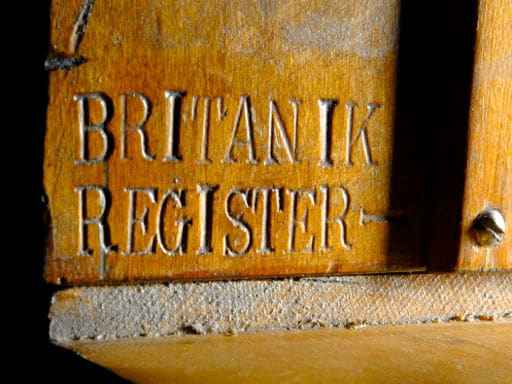
The Britannic Organ, detail view
Dueblin: Both, yourself and the museum have studied the history of the company M. Welte & Sons intensively. Apparently even today it is not possible to explain or figure out what these brilliant technicians created over a hundred years ago. In 1992 in Seville I played on the new Bösendorfer-Flügel – a sensational musical-technical achievement at that time. Here I see a Steinway grand piano outfitted with a playback system with Welte music rolls. When it plays Arthur Nikisch and I see how the keys move with such a unique displacement and velocity sensitivity, I get the chills. How is it possible that a company possessed such recording proficiency over a century ago?
Dr. Christoph E. Hänggi: You are not the only one who is fascinated. Not only that: there is so much that neither we nor the most adept technicians in the world today can explain. The Welte company originally made flute clocks and orchestrions, first with wooden cylinders, later though from the 1880s they operated orchestrions with paper rolls. That was an incredible technical achievement at the time, comparable today with the invention of the iPhone. Musical pieces were stamped onto the rolls. These were not yet recorded musical pieces but mechanical music. In 1905 they developed the Welte-Mignon system and from then on could record piano music from pianists which can still be played in perfect quality. Among the artists recorded are names such as Carl Reinecke, Claude Debussy, Edvard Grieg, Gustav Mahler, Max Reger, Richard Strauss or the aforementioned Arthur Nikisch: famous artists, still known today. All of these pianists can be heard on a grand piano that stands here in the museum or on similar instruments in other museums for mechanical music. The virtually digital quality is simply astounding. How Welte managed to capture the very precise key displacement and velocity, which you observed is still an unsolved mystery.
We know of several comments made by Welte employees, but no one ever spoke about the recording process. Karl Bockisch, who developed the system together with Edwin Welte, once told a visiting journalist: “You have now seen the playback equipment and have noticed that its functioning even in the nuances is really quite simple. The operating method of the recording device is even simpler, but that remains our darkest secret. Only myself, my brother in law Edwin Welte and our technical director know about it.” A similar comment was made by Edwin Welte to the question of how the recording process functioned: “It functions quite simply.” For that time period, the recording process was, of course, a sensation, but even today it is not clear how it really functions and there are no documents from the Welte company about it. The museum owns one of these recording devices – the only one in the world – but how it records for a piano has not yet been deciphered.
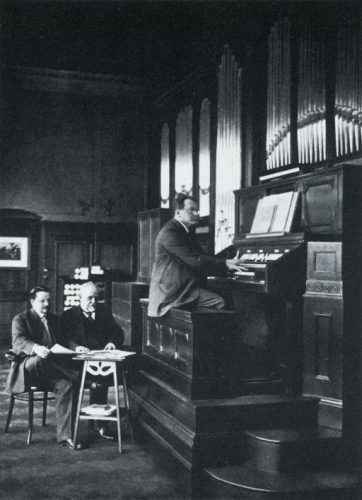
Max Reger at the Welte Company’s recording organ. On the left: Edwin Welte and Karl Bockisch
Dueblin: How does the recording process on the organ function?
Dr. Christoph E. Hänggi: We are pretty clear on how the Welte-Philharmonie system works. It is easier to record organ music because the keys of the organ cannot be played in a dynamically differentiated way. The organist played on the recording organ in Freiburg in Breisgau or New York. There was a recording studio for piano and organ on 5th Avenue in New York. The organ was connected to the recording device electrically. When a note was played, the recording device marked a line on the paper roll that stopped only when the key was released. The scores were also recorded. In this way, all of the information for the organ performance could be recorded. After the recording, the lines on the paper were punched out, and these holes made a playback possible. You could listen to the recording and just like a modern sound studio, one could go back to the recording – in this case the lines on the paper roll to check and to correct any mistakes. This went on probably until the organist was satisfied with the result. On one of the rolls someone wrote: “good at last!” The reason we know so much about the recording process for the Welte-Philharmonie-Organ is that in addition to the Britannic-Organ and the recording device we spoke of earlier, we also have 1’230 so called recording rolls which came directly from the archives of the Welte company in Freiburg in Breisgau. It is possible to see the recording process on these. The rolls were acquired by Heinrich Weiss at the same time as the organ and in an amazing stroke of luck.
We also noticed that even the organ recordings were more freely scored and played than is usually done today. I’m talking about the late romantic period, before the so called organ movement which in the 20th century brought with it much tighter and stricter scoring practices and playing styles, which led away from the romantic repertoire and back to Bach and his Baroque contemporaries.
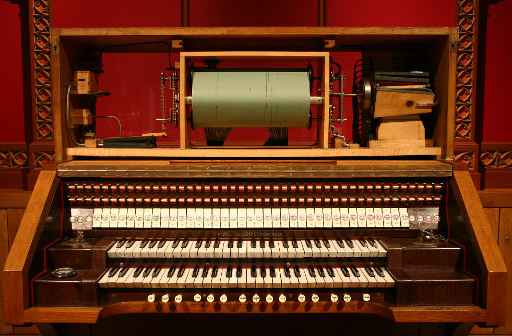
The Britannic Organ, The organ console
Dueblin: Could you tell us how the Welte-Philharmonie-Organ came to be in Seewen and why it is not at the bottom of the Aegean Sea along with the ill-fated Britannic?
Dr. Christoph E. Hänggi: We know that the organ was built for the Britannic in 1913/1914. It was purchased by Heinrich Weiss in Wipperfürth, Germany in 1969 where it had been standing in an event hall since 1937. Before that, from 1920, the organ had belonged to a camera manufacturer from Stuttgart named August Nagel who had it set up in his factory villa. When the Britannic was requisitioned as a hospital ship in WWI, the organ had been sent back to the Welte company in Freiburg in Breisgau and then to Stuttgart. The Britannic sank after hitting a German underwater mine in 1916.
Dueblin: You work with numerous specialists worldwide, not only in the field of mechanical music, but also in the areas of interpretation and musical tradition. Which scientific projects are you currently involved in and where do you see potential for the museum?
Dr. Christoph E. Hänggi: Firstly, work on the Welte-Mignon-Piano and the Welte-Philharmonie-Organ rolls is continually expanding. Specialists from the USA, England, Australia, Italy, German, France and Switzerland are interested in them and dissertations have already been written on Eugène Gigout und Marco Enrico Bossi, two famous organists of the first decade of the 20th century. Besides our music rolls, no other recordings of their work exist – and these men were vitally important to the development of musical interpretations in their countries. Secondly, we are continuing work on the release of CDs of the organists, and in the near future, also pianists of that time. These exciting releases have come about in collaboration with the classical label OehmsClassics in Munich, who would like to have recordings from us of the German composer and organist Max Reger for the occasion of the 100th year anniversary of his death in 2016. Thirdly, we are planning a written and electronic catalogue which would contain all of the Welte-Philharmonie-Organ rolls in existence today. These are only the projects connected to the subject of Welte, but there are also so many other interesting things going on in the world of mechanical music.
Dueblin: Dr. Hänggi, what are your personal wishes for yourself and for the future of the museum?
Dr. Christoph E. Hänggi: Unfortunately, we don’t have the space to exhibit our entire collection. We possess about 10’000 pieces in our collection. Especially Swiss music boxes that Heinrich Weiss collected passionately in earlier times cannot all be shown. Most of the pieces are in a vault for cultural treasure that is not accessible to visitors. The same is true for the clock collection of the Swiss National museum, also located in Seewen. Time pieces, musical clocks and music boxes were the origins of mechanical music, which came from the clock making industry and developed pocket-watches and flute clocks. This development and the ingenuity especially of Swiss pioneers and businesses in this field should be displayed. However, we just don’t have the space at the moment. That is why it would be ideal – and this would be my wish – if in the next few years we can expand the Museum of Music Automatons in Seewen enough so that we can offer the visitors, in addition to the current tours and special exhibitions we have now, an even greater museum experience.
Dueblin: Dr. Hänggi, thank you very much for this conversation. I wish both you and the museum continued success in the future!
(C) 2013 by Christian Dueblin. All rights reserved. Other publications require the author’s explicit consent.
______________________________
Links
– The Museum of Music Automatons
– The Museum of Music Automatons @ Wikipedia


